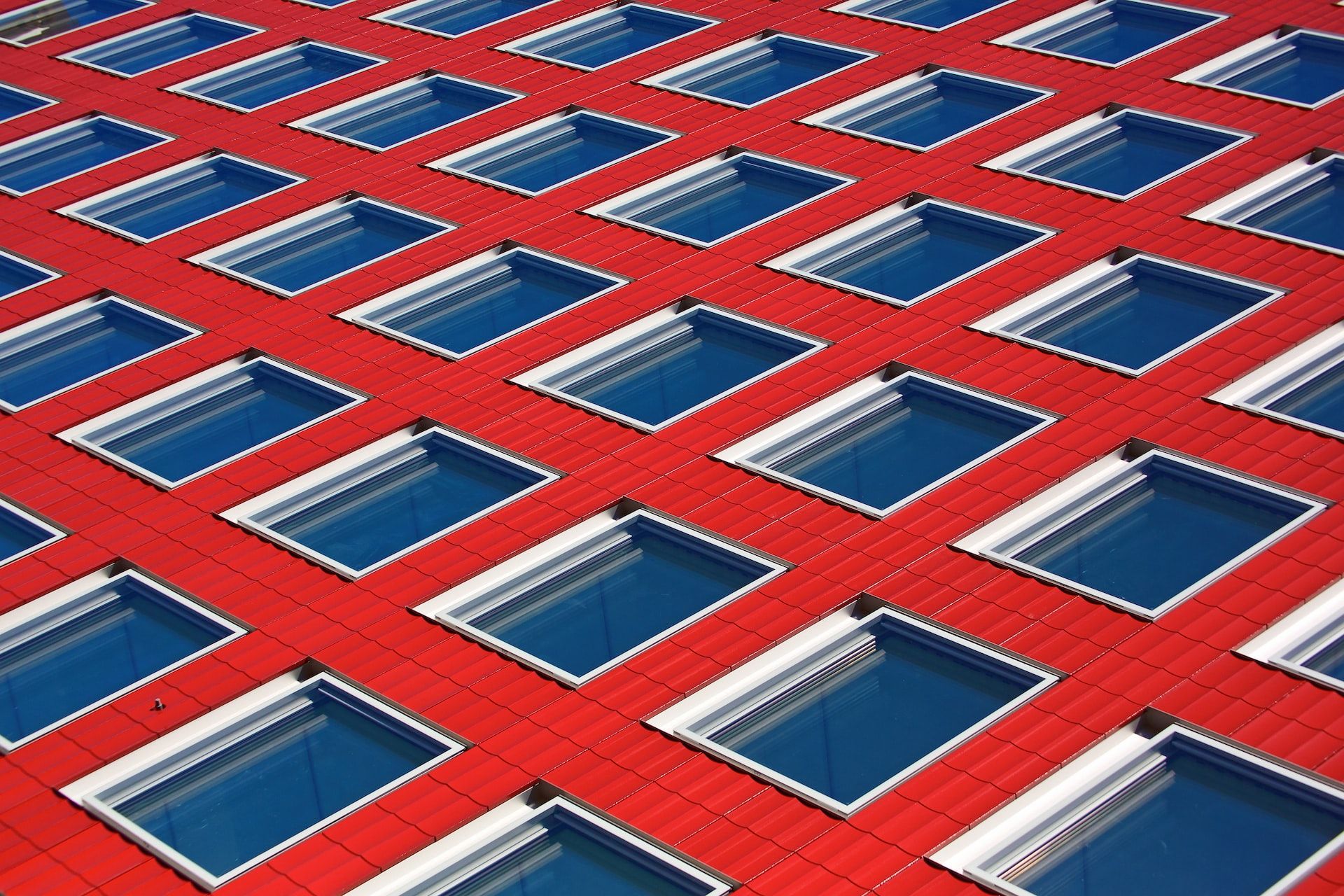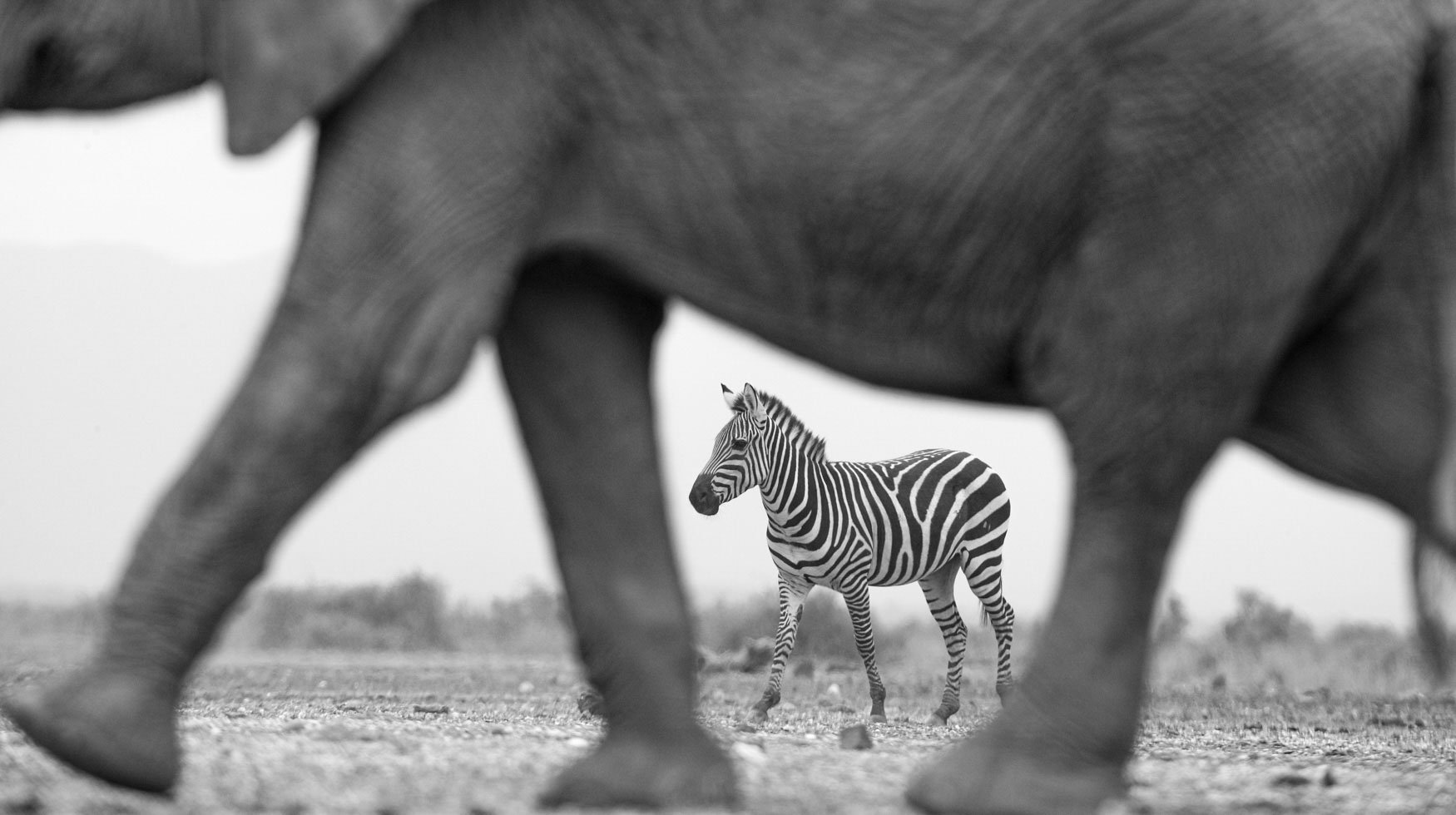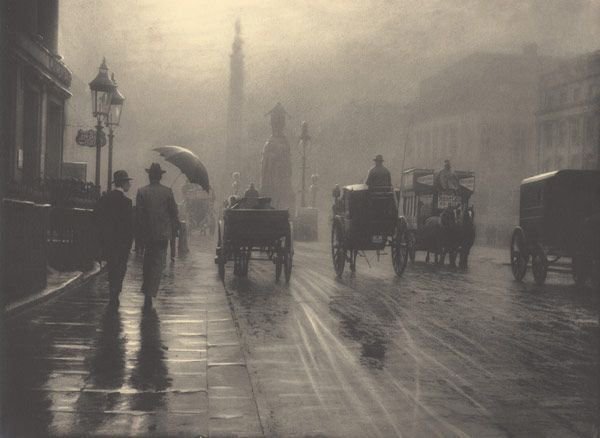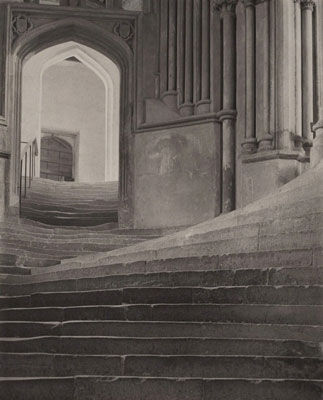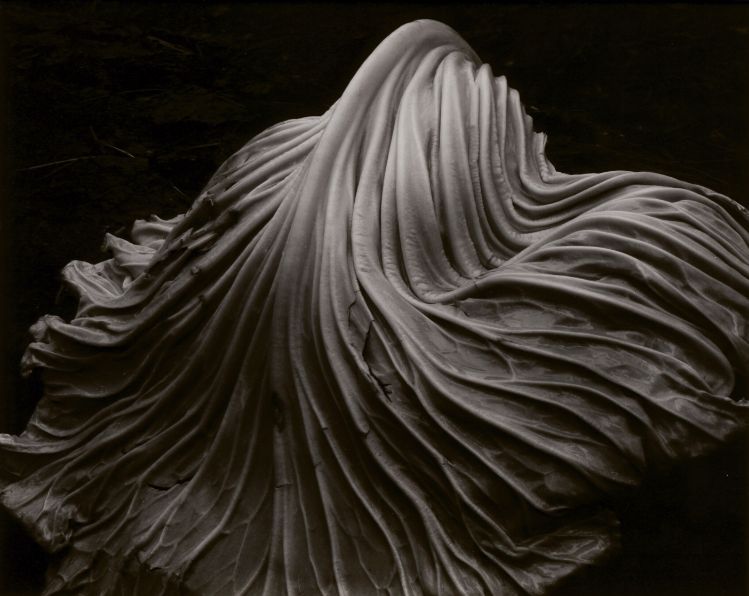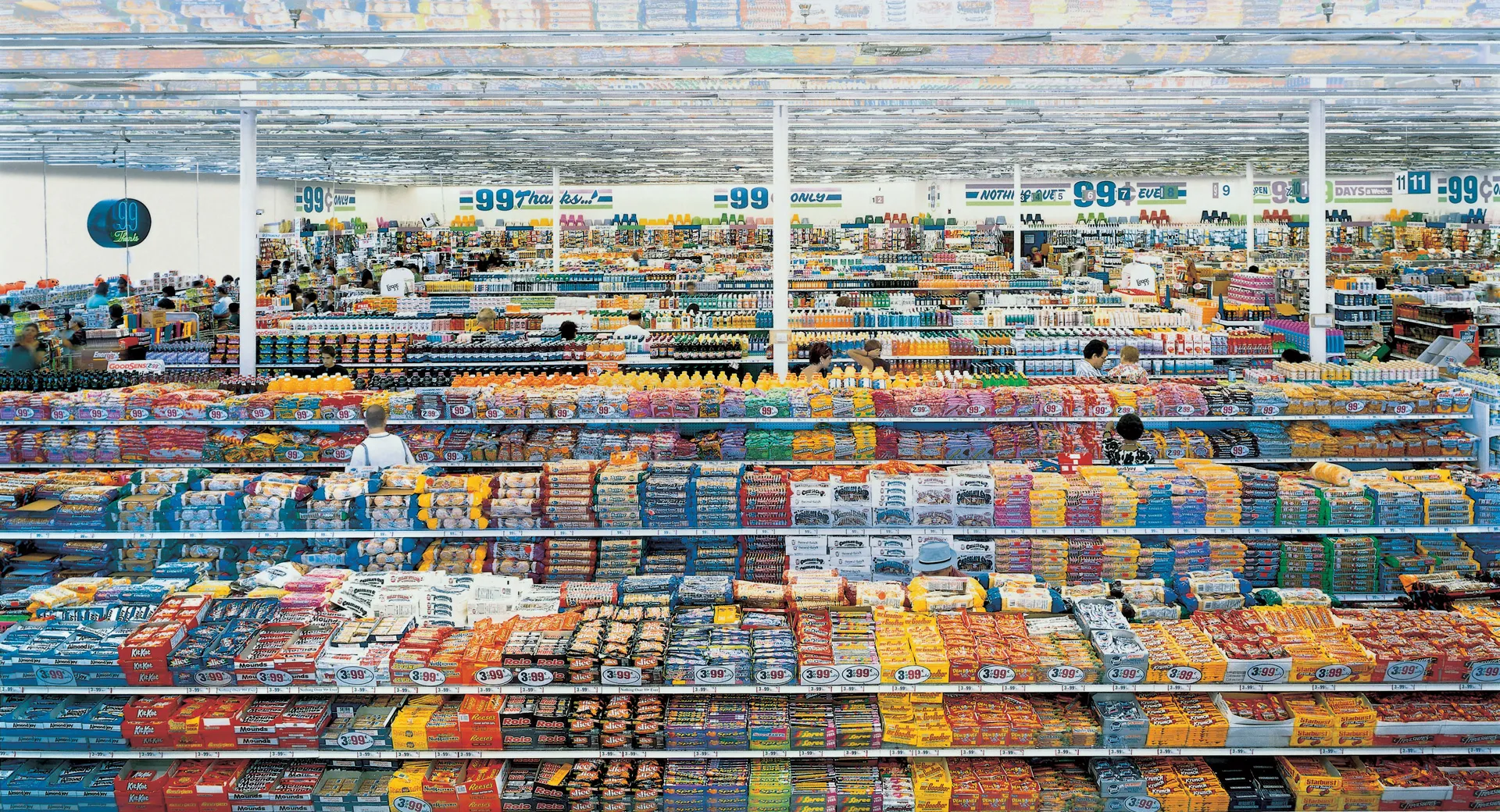“I am never interested in the individual, but in the human species and its environment.”
————–Andreas Gursky
Photographs:
Amazon, 2016: Showcasing the original and personal style of Gursky and a piece of evidence claiming his target. In this work, Gursky portrayed a massive viewpoint of a huge supermarket, with all kinds of different objects and commercials. The main reason that made this abstract is because there are not any specific targets Gursky aimed in this photograph; instead, many elements differentiating color, line, and shape, are shown to create a mixed and total feeling for the audience.
99 Cent, 1999: Similar to the previous photograph, this work has a sense of abstraction as it creates another mixed feeling inside a relatively smaller area. There are also hints all around the photograph of “99 cents” that can be found on the walls, on the commercials, and on the counters, as it was once a popular commercial store that required only 99 cents to buy its products. This includes elements of color, shape, and pattern as Gursky tried to create an abstract with repetitions of repeated mentioning, with the hidden ironic feeling of criticizing modern consumerism.
Rhein II, 1999: This work of Gursky has a strong sense of contrast compared to the previous photos that included an infinite amount of individual elements to create a big influence and atmosphere. Instead, simple elements of color, line, and shape worked together to create a showcase of a river calmly flowing above the flat green fields, under the white sky. It is similar to a previous work of his, Rhein, created in 1996, and serves as a subsequent artwork for that.
Rimini, 2003: Back to Gursky’s previous unique style, there are similarities and also differences in this relatively new capture of an Italian beach on a good day, with tourists and their umbrellas forming the structure for this piece of work. For example, the establish of colors and patterns was always his way of creating photographies, but this time, he chose an angle from the top to the bottom, instead of his previous ones which were on the same level, probably because this perspective can portray the umbrellas in a more significant way, as what the “sun” will probably see from its point of view.
Paris, Montparnasse, 1993: This is a rare artwork compared to the previous styles that influenced Gursky the most; instead, this artwork showcases and combines architecture from the city and abstraction together, creating a unique style of his own. The building consists of many rectangles (related to the shape element) with different colors on each of them, trying to portray the side as if it’s a mosaic board).
Salerno, 1990: This work contains similar elements to the previous style Gursky established. For example, the red and white patterns on the bottom part indicate and show hints from his previous works, with styles that he liked; however, this time the photograph was shot with a bigger “range”, as in, for his previous works, the entire image would probably only show the red and white shapes. This time, extra, nature, and infrastructure elements, such as the port on the top and mountains, are all portrayed and displayed within this massive work.
Chicago Board of Trade, 1999: This goes back to the old style of Gursky, showcasing a collection of different colors, but this time creating a bit messier feeling as the shape wasn’t able to take control of the colors, creating a feeling as if the color was “splashed” onto the artwork as in a painting.
Pyongyang IV, 2007: This artwork stands out as a unique style within the queue of Gursky’s artworks. Firstly, unlike other photographs that include a wide range of different colors, this mainly only has red as the primary color and black for backups. The shape in the bottom is also similar, or even, the same, as in the order and overall looking.
Ocean II, 1997: At first, I could not even tell that this was shot by Gursky, the author who loves to use a mix of color and shapes to create abstraction. In this photo, the dark blue and black ocean is displayed in almost all of the areas, starting from the middle and stretching out. On the sides, there is evidence of islands that come in white, gray, and dark black. The abstraction level, in total, is definitely pushed to the top.
Final List:
Interestingly, most of Gursky’s photographs have a different top (compared to the bottom of the shots, such as the indoor color series, the Rhein, etc.) and have shared “personalities” within that form a connection. They often have a large scale with high detail (shown by the immense amount of colors in each shot), as well as the repetitions and patterns that structure the colors. Lastly, to link to the quote from the beginning, his works focus on the big environment, not by focusing on any individual objects. That, is Gursky’s abstraction.
Works Cited:
“Andreas Gursky.” Gagosian, 11 June 2024, gagosian.com/artists/andreas-gursky/. Accessed 17 Feb. 2025.
“99 Cent – Andreas Gursky | the Broad.” Thebroad.org, 2016, www.thebroad.org/art/andreas-gursky/99-cent. Accessed 17 Feb. 2025.
“Rhein II.” Wikipedia, Wikimedia Foundation, 17 Nov. 2024, en.wikipedia.org/wiki/Rhein_II. Accessed 17 Feb. 2025.
“Andreas Gursky | Rimini (2003) | Artsy.” Artsy.net, 2016, www.artsy.net/artwork/andreas-gursky-rimini. Accessed 17 Feb. 2025.
“Andreas Gursky | Selected Works – Paris, Montparnasse.” Andreasgursky.com, 2025, www.andreasgursky.com/en/works/1993/paris-montparnasse. Accessed 18 Feb. 2025.
Tate. “‘Chicago, Board of Trade II‘, Andreas Gursky, 1999 | Tate.” Tate, 2022, www.tate.org.uk/art/artworks/gursky-chicago-board-of-trade-ii-p20191. Accessed 18 Feb. 2025.
Sawa, Dale Berning. “Andreas Gursky on the Photograph That Changed Everything: ‘It Was Pure Intuition.’” The Guardian, The Guardian, 18 Jan. 2018, www.theguardian.com/artanddesign/2018/jan/18/andreas-gursky-each-photograph-is-a-world-of-its-own-best-photograph-salerno-harbour. Accessed 19 Feb. 2025.

























